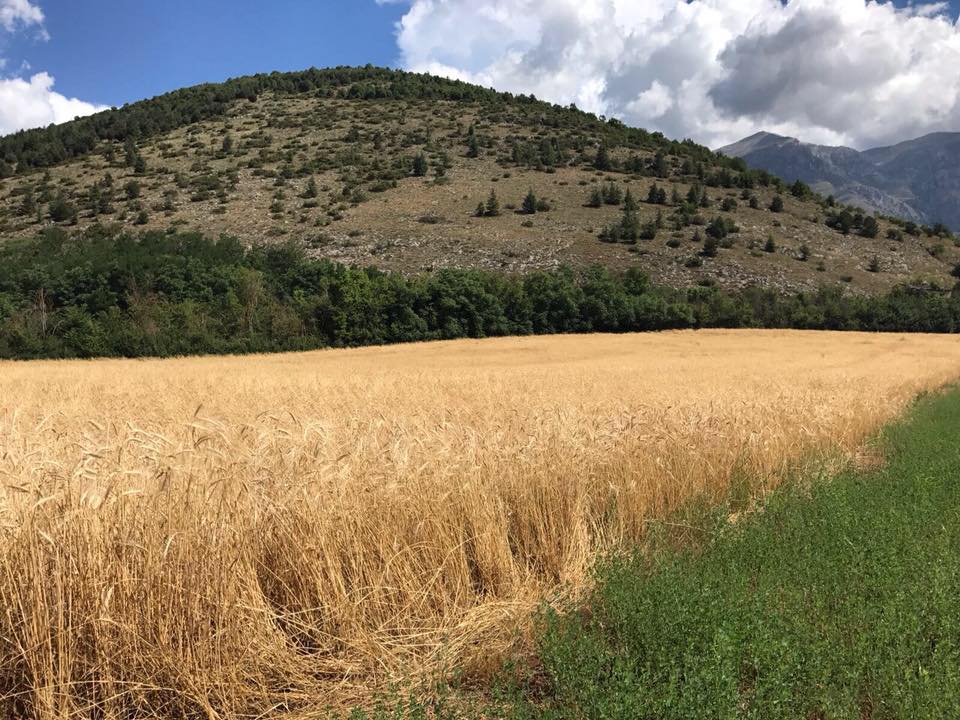

Solina’s wheat is one of Abruzzo’s traditional agricultural products, cultivated mainly in the territory surrounding the Gran Sasso e Monti della Laga National Park, especially near the province of L’Aquila. There are many documents attesting the connection between this food and the life of Abruzzo’s farmers. This product has been cultivated since the 16th century, and families used it every day to make bread and sweets. Some historical records claims that this kind of wheat has been cultivated in Abruzzo since late ‘700.
Solina is a kind of wheat strictly connected to a barren soil and freezing temperature. It can survive covered by snow and it can be cultivated up to 1400 mts above sea level. The higher the altitude, the better the quality. The sowing period takes place during autumn, especially mid-to-late September (for higher soils), where for lower valleys the second and the third period take place in October.
From the seed is obtained a strong, rough flour suited to make homemade bread and pasta, as well as pizza.
Elements of tradition
Solina’s wheat is cultivated on hard-to-reach mountain lands. It is hard to process it and it take a long time to grow, especially in higher altitudes. Average yielding is not extremely high, and cultivation has to be alternated with corn and potatoes and then with forage and grain legumes (chickpeas and lentils).
Production area.
Gran Sasso area, especially L’Aquila province (minimum altitude: 750 mts above sea level).
Seasonality.
Sowing: autumn. Harvest: late July.